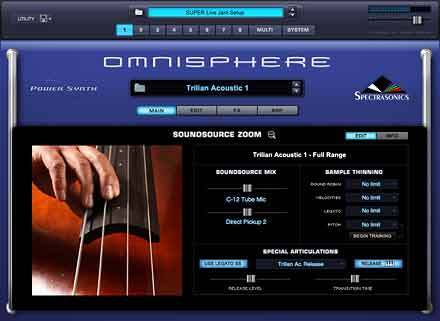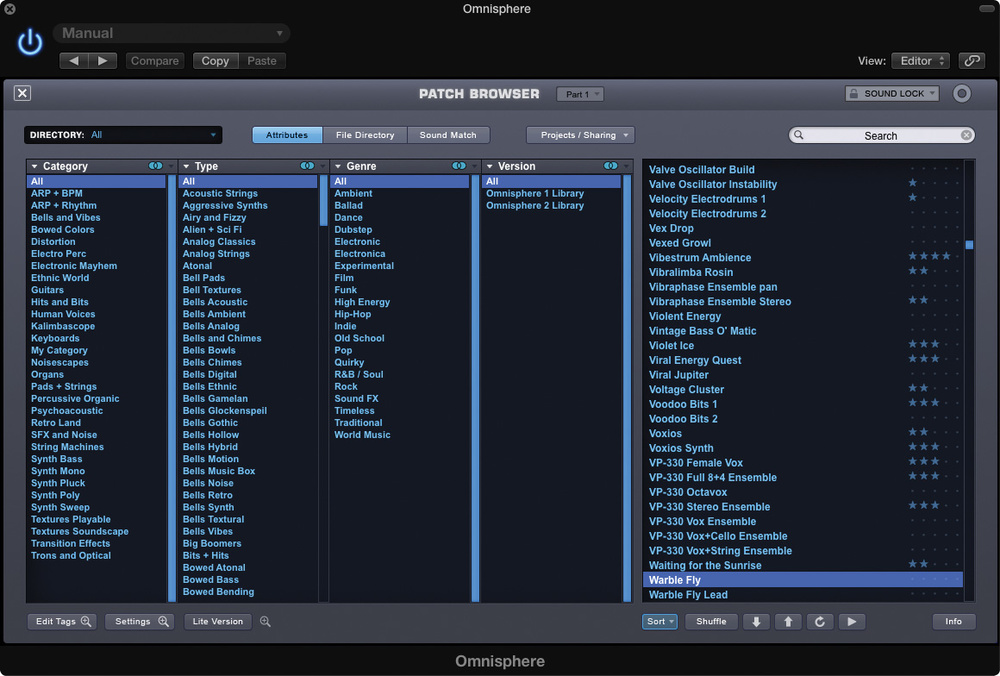
Apart from all the samples included in Trilogy, which guarantee full compatibility with your previous projects, you also get a plethora of new instruments for a total of 1,290 patches! It has every possible electric bass, from Fender to Music Man, Yamaha, Epiphone, Lakland, and Fodera the synth bass category increased to 333 sounds taken from the best synthesizers of the last 50 years: Novation Bass Station, Yamaha CS-80, Cwejman Modular, Moog Minimoog, Little Phatty, Voyager & Taurus, Korg MS-20, Oberheim, ARP 2600, Roland Juno 60/106, Waldorf Pulse, DSI Mopho & Tetra, Roland TB-303, SH-101, Metasonix KV-100 Assblaster, SE-1, Omega, ATC-1, etc. The good news is Trilian's sound bank includes more than 21,000 samples just for the upright bass alone! All in all there are ten times more samples than its predecessor. That's why we are very happy to welcome Trilian.

When compared to the latest Scarbee or Pettinhouse products, it's obvious that Trilogy cannot conceal its age, from a technical point of view. However useful to program convincing bass parts (thanks to the True Staccato programs that provide hold notes for the four lowest octaves and staccato notes for the four higher octaves in the same patch), Trilogy wasn't perfect: some criticized its lack of character while others didn't like the "oversized" sound of the instruments, which was stunning for solo parts but too big for a full mix. There were people who preferred the sound character of the Quantum Leap Hardcore Bass (vintage to distorted sharp sounds adequate for rock, industrial and big beat music) or Scarbee's detailed and plastic bass sound, yet there was no choice but to accept that no competitor could offer such versatility/quality ratio as Trilogy did. Modern, vintage, acoustic, electric, or synth bass sounds combined with finger, pick and slap playing techniques: it had just about everything, including a wonderful double bass. The reasons for its success were the careful and accurate sampling and the huge sound it provided – Spectrasonics' hallmark – but, above all, a versatility competitors couldn't keep up with. Based on the UVI Engine from Ultimate Sound Bank (the same audio engine used on Plugsound and MOTU's MachFive) and an enormous sample bank (for those days: 3 GB), Trilogy quickly became the market's reference in its category.


When it comes to virtual bass, the manufacturer struck a decisive blow in 2002 with Trilogy.


 0 kommentar(er)
0 kommentar(er)
